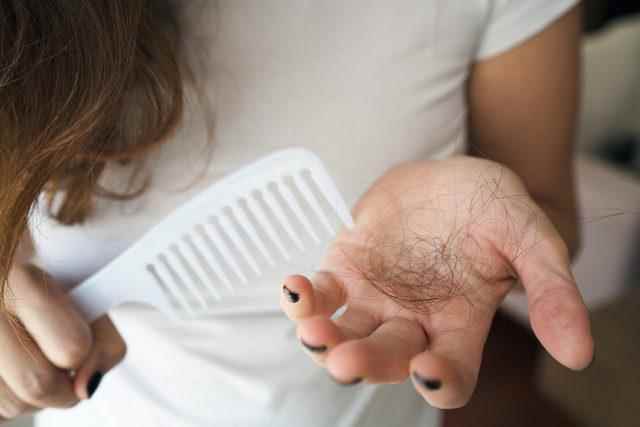Hair loss may develop gradually over the years or may occur suddenly. Depending on the underlying cause, it can be temporary or permanent. Aesthetic, Plastic and Reconstructive Surgery Specialist Op. Dr. Current Öztürk told you what you need to know about the causes and prevention of hair loss in men and women.
CAUSES OF HAIR LOSS
There are several main types of hair loss, each with different underlying causes.
Androgenic alopecia, refers to hereditary hair loss, such as male pattern baldness or female pattern baldness. It is the most common cause of hair loss, affecting 50 percent of people. Hair loss related to androgenic alopecia tends to occur gradually. While some people may experience hair loss during adolescence, others may not notice symptoms until their middle age, between the ages of 6 and 11.
Female pattern baldness often results in thinning of the scalp all over. It may also appear as enlargement or thinning around the part. Male pattern baldness typically involves progressive hair loss over the temples and thinning on the top of the head, creating an “M” shape.
alopecia areata, is an autoimmune condition that causes your immune system to attack hair follicles, resulting in bald patches that can range from small to large. In some cases, it can cause complete hair loss. In addition to hair loss on the scalp, some people with alopecia areata lose hair from their eyebrows, eyelashes, or other parts of the body.

anagen effluviumincludes rapid hair loss. This usually happens due to radiation therapy or chemotherapy. Hair usually regrows after treatment stops.
telogen effluviumIt is a type of sudden hair loss that results from emotional or physical shock, such as a traumatic event, a period of extreme stress, or a serious illness. It can also be due to hormonal changes such as pregnancy, childbirth, menopause. Other potential causes of telogen effluvium are malnutrition, certain endocrine disorders, starting or stopping hormonal birth control.

Also called ringworm of the scalp tinea capitisis a fungal infection that can affect the scalp and hair shaft. It causes small bald patches that are scaly and itchy. Over time, these patches increase in size. Other symptoms are brittle hair that breaks easily, scalp tenderness, scaly patches of skin that appear gray or red.
Traction alopecia is caused by too much pressure and tension on the hair, often from wearing it in tight styles like braids, ponytails or buns.
Other reasons; Diseases that cause scarring, such as lichen planus and some types of lupus, can cause permanent hair loss due to scarring.
WHAT ARE THE TREATMENT OPTIONS FOR HAIR LOSS?
There are a number of treatment options for hair loss, but the best option for you will depend on what is causing the hair loss. Medications will likely be the first course of treatment. If medication doesn’t help, your healthcare provider may recommend one of the following procedures.
Hair transplant surgery involves moving small plugs of skin, each containing a few hairs, into the bald parts of your scalp. This works well for people with hereditary baldness because they typically lose hair on the top of the head. You may need more than one procedure over time, as some hair loss can be progressive.
